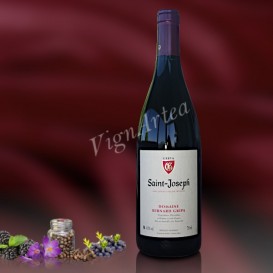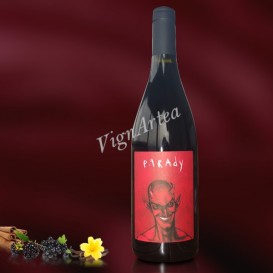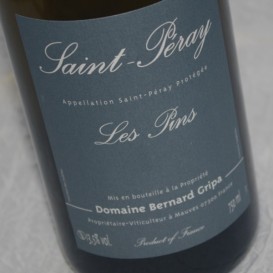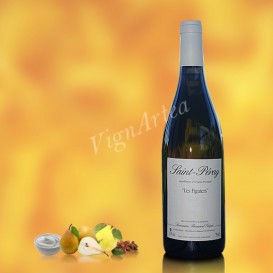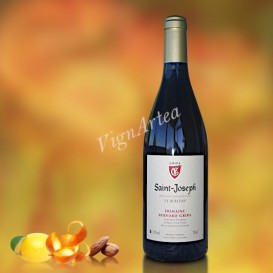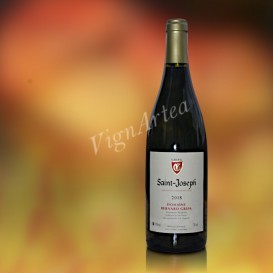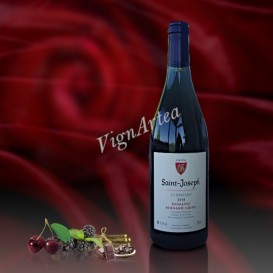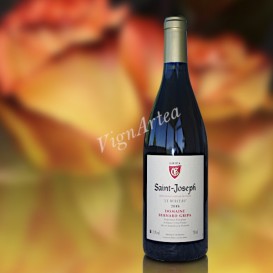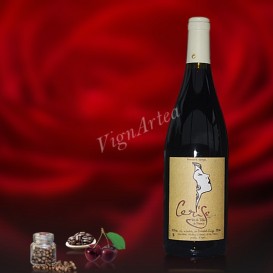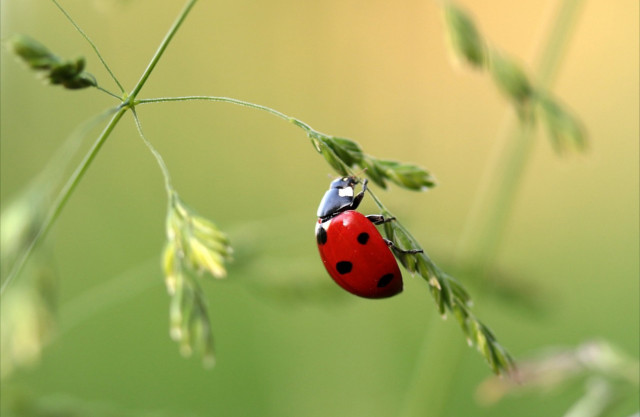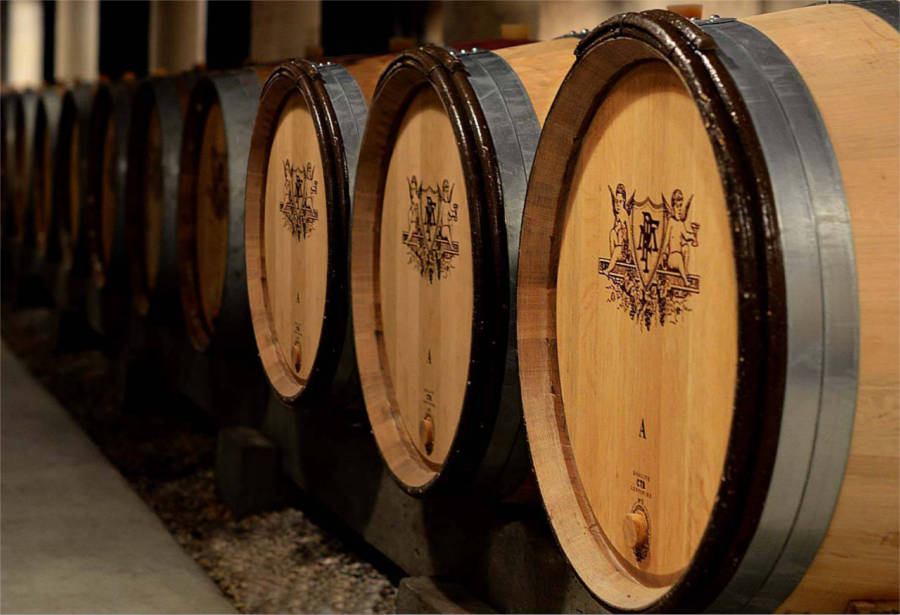Domaine Bernard GRIPA

RHÔNE 13 ha SUSTAINABLE AGRICULTURE WINEMAKER : Fabrice GRIPA
ESTATE HISTORY
The Bernard and Fabrice GRIPA ancestors left from their native Spain in 1670 to settle in France, in Saint-Péray. Two centuries later, the GRIPA family moved in the small village of Mauves where they live since.
The name "Domaine Bernard GRIPA" appeared on the labels in 1974 when Bernard GRIPA marketed its first bottles. In 2001, the son, Fabrice GRIPA, took over the estate.
The vineyard covers a total area of 16 hectares, 3 ha are located in the heart of the historic Saint-Joseph designation. The vines are planted on the steep slopes of the Rhône valley. Their cultivation is therefore entirely manual, as is the grapes harvest.
TERROIR
The Rhône Valley landscapes bear witness to a several million years long past during which the region has undergone multiple transformations.
The primary soil consists of the famous Granite de Tournon, a biotite granite rock that formed in the Precambrian, 600 million years ago.
From the Triassic (-251 to -199 Ma) until the end of the Cretaceous (-65 Ma), the region was completely covered by a more or less invasive sea, depending on the era, sometimes favoring sandstone deposits and sometimes thick limestone formations (Urgonian limestones).
The different geological layers bear witness to marine movements, first transgressive, then gradually regressive; At the Lias period (-199 to -175 Ma), the deposits is composed of clay limestones and black marls, while the Jurassic sedimentation is marked by a series starting with black earth, then a set of soft gray-black marls and thick black clay limestones, followed by layers of dark gray clay limestones alternating with Oxfordian clay marls (-161 to -155 Ma), and finally a Rauracian limestone series.
At the end of the Jurassic era and the early Cretaceous period, the sea has completely withdrawn. But from the Cretaceous, the environment becomes marine again, the sea deepens during the Hauterivian period (-136 to -130 Ma), then a emersion tendency reduces the sea level which then becomes shallow, only stirred by currents and waves, favoring the deposit of crystalline and compact limestones.
It is from the Oligocene (-33 to -23 My) on, that the greatest disruption took place : an oriented east-west tectonic relaxation fractures the Rhone valley and leads to a subsidence of the Valence ditch. The faults cause a tilting towards the south of the whole ditch, favoring the sea transgression by the south first, then towards the north until Alsace.
In the Miocene (-23 to -5 Ma), the Valence ditch, completely submerged, is the source of a sandy sedimentation, with more or less coarse and marly sands. At the end of the Miocene, the Rhône will settle shortly in the valley but a new and slow marine transgression occurs and causes a thick accumulation of clays series, sometimes alternating with silts and sands. This sedimentation will end with a lacustrine and fluvial sedimentation.
Late Miocene-early Pliocene, 5 million years ago, new tectonic movements will allow the sea to invade again the valley network until Lyon by transforming it into a long and narrow ria which will gradually be filled with marine clays, then clays and lacustrine sands, and finally alluvial sands and gravel. The last morphologically most important stage took place in the Quaternary, during the last glaciation periods which caused an intense digging of the valleys and the construction of the various Rhone terraces.
The plots owned by the GRIPA estate within the historic Saint-Joseph designation are largely located on the Granite de Tournon, these famous eruptive rocks which formed 600 million years ago and which nourish the Syrah and Marsanne vines at the origin of the "Le Berceau" wines.
For the rest of the Saint-Joseph designation, the localities of Peygros and Javignas benefit from the same granite terroir and participate in the classic red Saint-Joseph wine production. The Rivoires and Les Opateyres localities, on the other hand, rest on soils dating from the Quaternary, on the famous terraces fashioned during the various Pleistocene glaciations that occurred 2 million years ago : the soil outcropping in Rivoires is the Pont de l'Isère terrace soil formed in the lower Pleistocene, and which consists of stony alluvium and sands, while the one outcropping in Les Opateyres consists of a layer of limestone loess coming from a recent wind erosion and which covers a river terrace dating from the Old Riss glaciation. This loess soil is particularly suitable to Roussanne and Marsanne cultivation whose grapes are dedicated to the classic white Saint-Joseph wines production.
On the Saint-Péray side, the vines are located in the Les Putiers sector, where the soil consists of colluvial granitic arenas and torrential alluvium coming from the high river terraces formed during the Mindel glaciation.
WINEGROWING & WINEMAKING
The vines are cultivated according to the sustainable agriculture principles. The plantation on terraces does not allow the winegrower to use motorized vehicles : all the work is done manual, harvesting included.
At the winery, the estate mainly uses 228-liter Burgundy barrels, sometimes 600-liter barrels. The red and white wines, are aged in wood barrels for 8 to 12 months.
For red wines, the grapes are generally destemmed at 70%, and the maceration lasts for two to three weeks. For the white wines, the grapes are gently pressed and the ageing takes place in the presence of fine lees.
The exceptional terroir of Tournon, renowned for its granite rocks, offers the vines a very hard but extremely faulty soil, which allows the roots to penetrate deeply the rock to find a precious water resource. This terroir is particularly suitable for Marsanne vine that a natural low acid variety and which requires high-quality terroir to produce balanced wines. The Granite de Tournon gives Marsanne wines minerality and vigour, and it brings to Syrah grapes this incredible freshness that Fabrice GRIPA knows how to preserve in his red wines.
-
RED SAINT-JOSEPH 2020 (Bernard Gripa)
32,00 € In stock!RHÔNE VALLEY - AOP SAINT-JOSEPH - RED WINE
Grape variety: Syrah (100%)
Native yeasts
Ageing for 12 months in french oak barrels- Nose: aromatic and slightly smoky. Notes of ripe black fruit and black pepper with a hint of chocolate.
- Palate: silky. Very fine tannins. Very long finish on ripe black fruit.
- Tasting date: November 2022.
- OUR OPINION: silky and aromatic, this vintage offers us a pleasant bouquet of very ripe fruit, it's very very tasty!
- Nose: aromatic and slightly smoky. Notes of ripe black fruit and black pepper with a hint of chocolate.
-
PARADY 2017 (Bernard Gripa) - RED WINE
42,60 € In stock!RHÔNE VALLEY - AOP SAINT-JOSEPH - RED WINE
Grape variety: Syrah (100%)
Native yeasts
Ageing in oak barrels for 24 months- Nose: tasty. Slightly vanilla notes with aromas of sweet spices, cinnamon, and black fruits.
- Palate: tight thread and woody notes.
- Tasting date: March 2021
- OUR OPINION: to let the wine age a little in the cellar so that the tannins become more rounded.
- Nose: tasty. Slightly vanilla notes with aromas of sweet spices, cinnamon, and black fruits.
-
LES PINS 2019 (Domaine Gripa)
24,90 € In stock!RHÔNE VALLEY - AOP SAINT-PÉRAY - DRY WHITE WINE
Grape varieties: Marsanne (70%) - Roussanne (30%)
Native yeasts
Ageing on fine lies for 8 months in french oak barrels- Nose: generous and complex. Aromas of white peaches, pineapple, apricots with a hint of aniseed.
- Palate: full-bodied, tasty and full of energy. Beautiful aromatic persistence.
- Tasting date: March 2021
- OUR OPINION: LES PINS is mostly made with Marsanne, it is an elegant and tasty wine, I find it very well made because of its freshness!
- Nose: generous and complex. Aromas of white peaches, pineapple, apricots with a hint of aniseed.
-
LES FIGUIERS 2018 (Bernard Gripa)
31,90 € In stock!RHÔNE VALLEY - AOP SAINT-PÉRAY - DRY WHITE WINE
Grape varieties: Roussanne (60%) - Marsanne (40%)
Native yeasts
Ageing for 8 to 10 months on fine lees with stirring in 228 liter oak barrels- Nose: delicate, finely aniseed flavour. Aromas of pear and quince, with a hint of cream.
- Palate: Round and creamy. Long aniseed finish.
- Tasting date: March 2021
- OUR OPINION: LES FIGUIERS is a wine of elegance, generous and round!
- Nose: delicate, finely aniseed flavour. Aromas of pear and quince, with a hint of cream.
-
WHITE SAINT-JOSEPH Le Berceau 2019 (Domaine Gripa)
47,99 € In stock!RHÔNE VALLEY - AOP SAINT-JOSEPH - DRY WHITE WINE
Grape variety: Marsanne (100%)
Old vines Native yeasts
Lees ageing of 12 months in french oak barrels- Nose: subtle and delicate. Aromas of orange peel, lemon and toasted almond.
- Palate: great aromatic richness.
- Tasting date: April 2021
- OUR OPINION: A very tasty and well-made vintage.
- Nose: subtle and delicate. Aromas of orange peel, lemon and toasted almond.
-
WHITE SAINT-JOSEPH 2018 (Bernard Gripa)
31,20 € In stock!RHÔNE VALLEY - AOP SAINT-JOSEPH - DRY WHITE WINE
Grape varieties: Marsanne (70%) - Roussanne (30%)
Native yeasts
Ageing for 8 months in oak barrels and stainless steek tanks- Nose: intense and slightly creamy. Notes of almond, yellow peach, lychee, lemon and pink grapefruit with a hint of anise.
- Palate: soft and fragrant attack.
- OUR OPINION: a wine full of elegance and refinement!
- Nose: intense and slightly creamy. Notes of almond, yellow peach, lychee, lemon and pink grapefruit with a hint of anise.
-
RED SAINT-JOSEPH Le Berceau 2018 (Domaine Gripa)
58,90 € OUT OF STOCK!OUT OF STOCK!RHÔNE VALLEY - AOP SAINT-JOSEPH - RED WINE
Grape variety: Syrah (100%)
Old vines Native yeasts
Ageing for 12 months in french oak barrels- Nose: dense. Aromas of juicy black cherry, blackberry, chocolate, liquorice with a hint of coffee.
- Palate: rich. Silky tannins.
- Tasting date: May 2020
- OUR OPINION: LE BERCEAU is a cuvée made from the estate's very old vines, which produce a very concentrated wine. This vintage is very successful, charming and generously flavoured, and should be decanted in its youth to round out the tannins.
- Nose: dense. Aromas of juicy black cherry, blackberry, chocolate, liquorice with a hint of coffee.
-
WHITE SAINT-JOSEPH Le Berceau 2018 (Domaine Gripa)
48,00 € In stock!RHÔNE VALLEY - AOP SAINT-JOSEPH - DRY WHITE WINE
Grape variety: Marsanne (100%)
Old vines Native yeasts
Lees ageing of 12 months in french oak barrels- Nose: subtle and fine. Aromas of acacia honey, ripe apricots and pears with light aniseed notes.
- Palate: full and tasty. Slightly aniseed finish.
- Tasting date: May 2020
- OUR OPINION: a honeyed vintage with a touch of acidity that makes it very tasty!
- Nose: subtle and fine. Aromas of acacia honey, ripe apricots and pears with light aniseed notes.
-
CUVÉE CERISE (Domaine Gripa)
15,50 € In stock!RHÔNE VALLEY - Vin de France - RED WINE
Grape varieties: Cabernet Sauvignon (70%) - Syrah (30%)
Native yeasts Ageing in stainless steel tanks for 1 year
- Nose: black cherry, pepper and coffee.
- Palate: supple, fresh and fruity.
- OUR OPINION: digest and full of freshness, a juicy red wine for the summer.
- Nose: black cherry, pepper and coffee.

